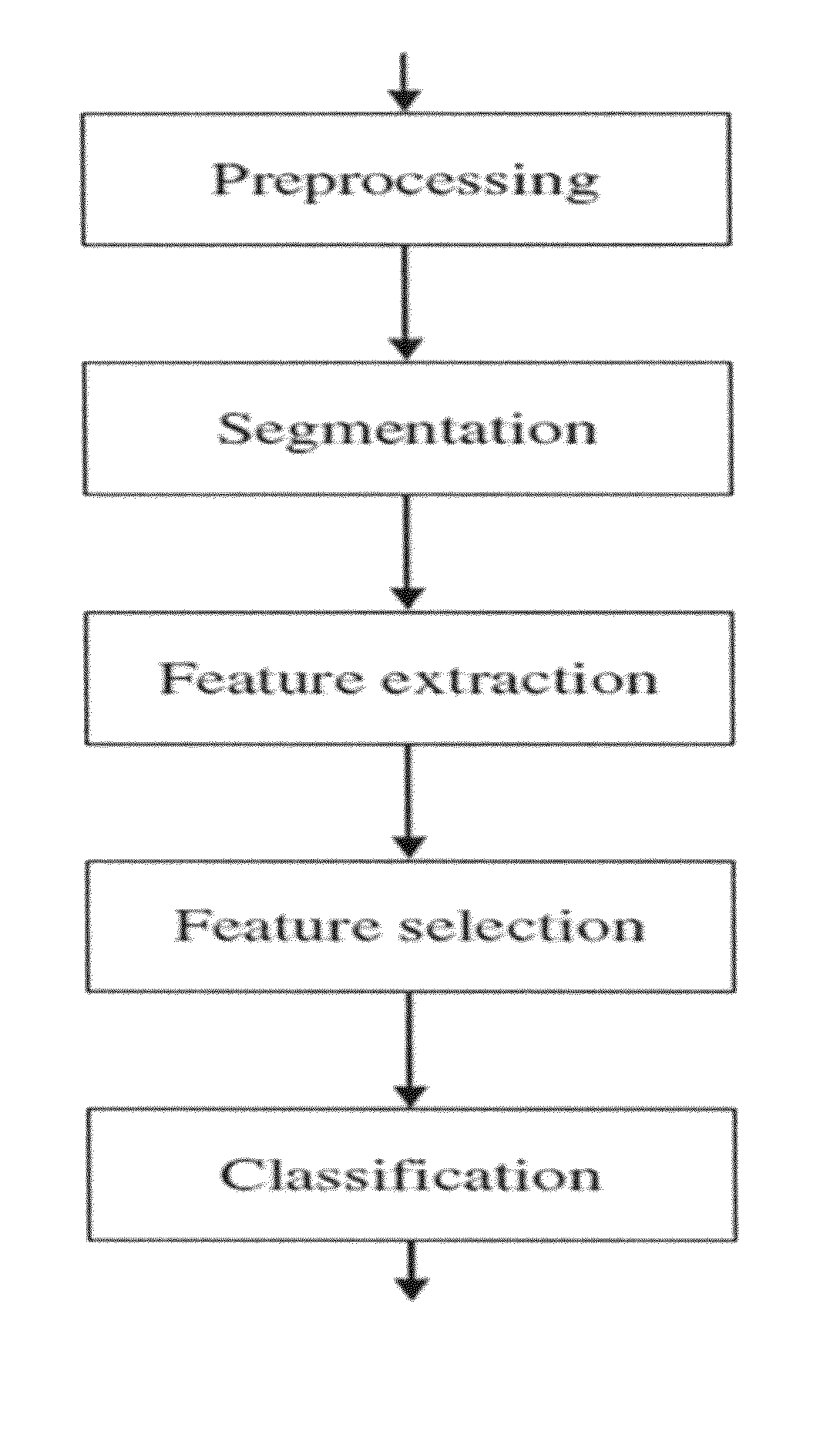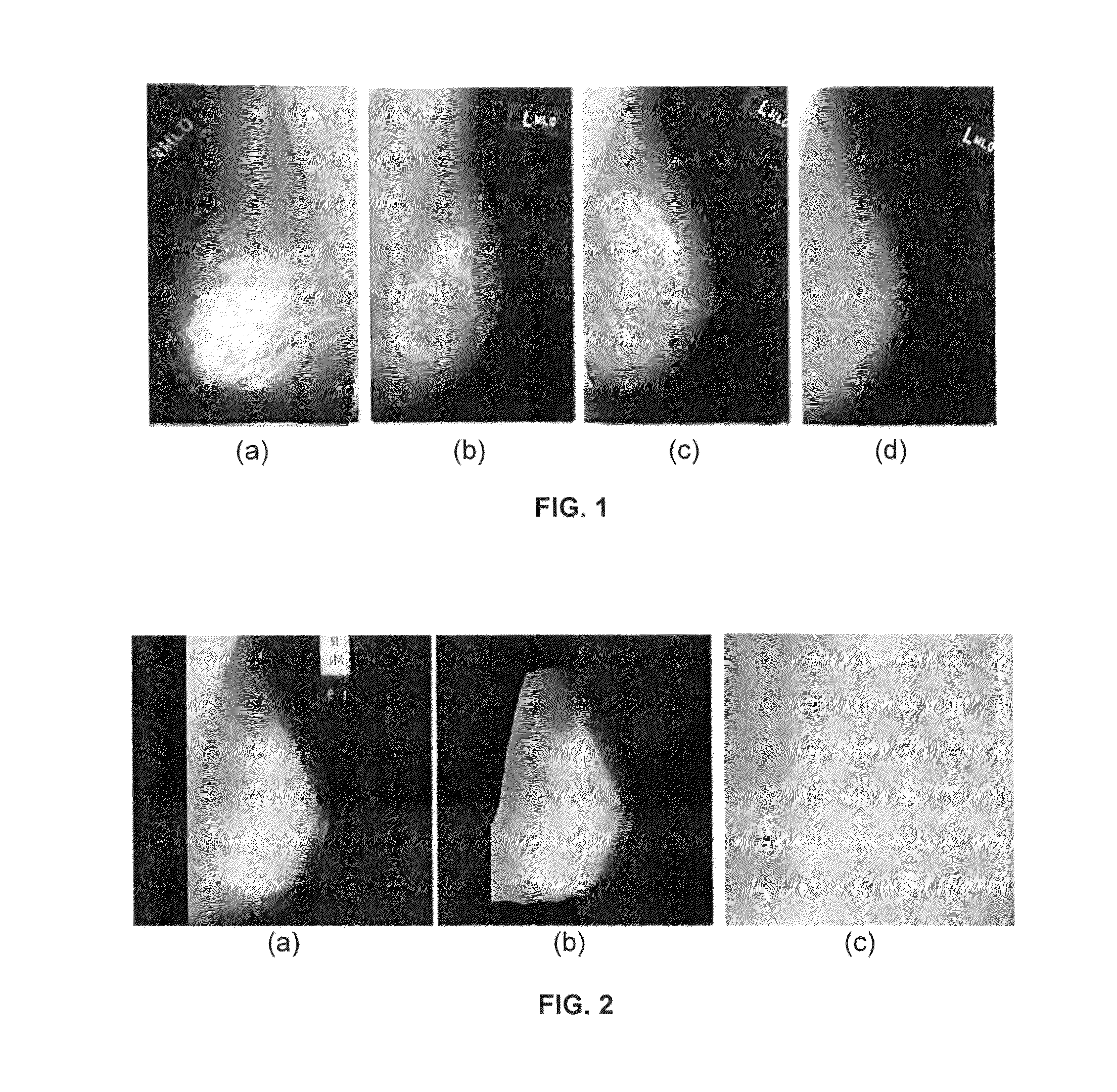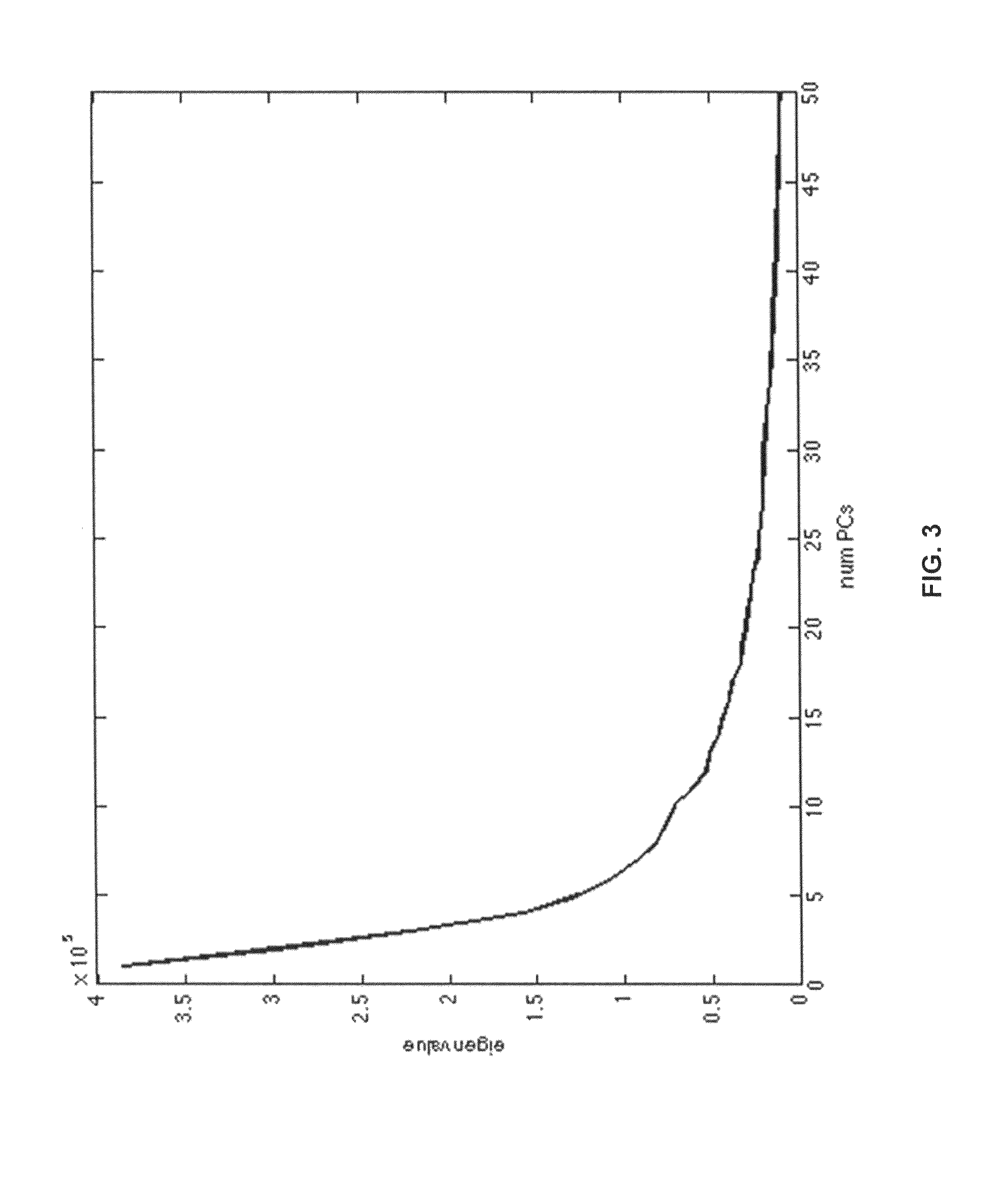Method, system and computer program product for breast density classification using fisher discrimination
a computer program and density classification technology, applied in the field of automatic classification of breast density, can solve the problems of increasing the likelihood of missing the presence of breast cancer, difficult to locate ill-defined cancers, and difficult to accurately identify breast cancer from digital mammogram images, so as to remove noise and enhance the contrast of digital mammogram images
- Summary
- Abstract
- Description
- Claims
- Application Information
AI Technical Summary
Benefits of technology
Problems solved by technology
Method used
Image
Examples
Embodiment Construction
[0030]Referring now to the drawings, wherein like reference numerals designate identical or corresponding parts throughout the several views. In medical content-based information retrieval (Med-CBIR) systems, the access to information is performed by the visual attributes extracted from images. The definition of a set of features, capable to describe effectively each region contained in an image, is one of the most complex tasks in the analysis of images. In addition, the process of characterization affects all the subsequent process of a Med-CBIR system (U.S. Cancer Statistics Working Group. United States Cancer Statistics: 1999-2008 Incidence and Mortality Web-based Report. Atlanta: U.S. Department of Health and Human Services, Centers for Disease Control and Prevention and National Cancer Institute; 2012. Available at: www.cdc.gov / uscs—incorporated herein by reference in its entirety). An image can be numerically represented by a feature vector, which should reduce the dimensiona...
PUM
 Login to View More
Login to View More Abstract
Description
Claims
Application Information
 Login to View More
Login to View More - R&D
- Intellectual Property
- Life Sciences
- Materials
- Tech Scout
- Unparalleled Data Quality
- Higher Quality Content
- 60% Fewer Hallucinations
Browse by: Latest US Patents, China's latest patents, Technical Efficacy Thesaurus, Application Domain, Technology Topic, Popular Technical Reports.
© 2025 PatSnap. All rights reserved.Legal|Privacy policy|Modern Slavery Act Transparency Statement|Sitemap|About US| Contact US: help@patsnap.com



